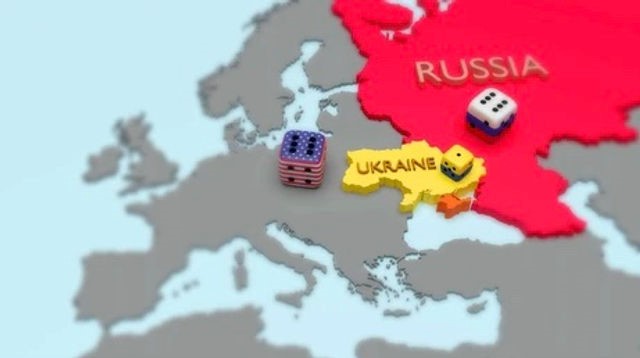Description

Disclaimer: Copyright infringement not intended.
Context
On the last day of the 2024 Raisina Dialogue , India’s Chief of Defence Staff General Anil Chauhan said that “grey zone warfare” is the latest in informal warfare.
Details
What does grey zone warfare mean?
- Grey zone warfare generally means a middle, unclear space that exists between direct conflict and peace in international relations.
- Grey-Zone Conflict refers to conflicts – not always violent – which are prolonged and frequently characterized by an ambiguous point of victory. Grey Zone conflict participants rely on unconventional tactics that do not cross the threshold of formalized state-level aggression. The aggressor however uses the risk of escalation as a coercive leverage; intimidation is central to effective grey zone operations.
- Grey Zone actions include election meddling, economic coercion, prolonged agitations, and the ambiguous use of unconventional force. They target specific vulnerabilities in the targeted nations to include political polarization; social imbalances, economic stagnation, unmanaged unemployment, and a weak military capability. Democracies are more likely to be the targets of manipulations of a Grey Zone conflict.
- A blog from the thinktank Atlantic Council quoted Clementine G Starling, a resident fellow in the Transatlantic Security Initiative, as saying, “A multitude of activities fall into this murky in-between — from nefarious economic activities, influence operations, and cyberattacks to mercenary operations, assassinations, and disinformation campaigns.”
- Other experts include economic actions too, such as debt traps and economic sanctions.
- One can argue that activities in the gray zone have always been a feature of great-power competition. Proxy wars, destabilizing insurgencies, legal warfare (lawfare), and information warfare—by adversaries and allies alike—have been a feature of conflict for millennia.
- The Cold War era, which began after the end of the Second World War in 1945, led to conditions that favoured grey zone warfare. Amid the US-USSR rivalry for ideological and economic dominance, the knowledge that both parties were armed with nuclear weapons meant direct conflicts had to be restrained.
- The cost of conventional conflict in the nuclear era has grown too steep, and the risk of escalation too profound. As a result, nations seek to promote their national objectives through aggression conducted covertly, or with obfuscated attribution or justification, in order to achieve their goals.
- Experts also told the thinktank that such methods are often employed by parties who have not had access to massive resources or power, traditionally. Therefore, such tactics can help gain an advantage over a more technically well-equipped adversary that is more used to conventional warfare.

What grey zone warfare looks like
- Experts from the US and Europe have characterised certain Russian and Chinese actions of late as examples of grey zone warfare. It includes the Chinese military’s presence in the South China Sea.
- The Philippines is one of the countries which have challenged China’s claims, extending over around 80 per cent of the region. In December 2023, it termed the presence of more than 135 Chinese maritime militia vessels near a disputed reef as “illegal”.
- It accused China of firing water cannons at its boats and ramming into others, while the Chinese coast guard blamed the Philippines for hitting Chinese boats.
- The Phillippines’ president Bongbong Marcos took to X to directly address “The aggression and provocations perpetrated by the China Coast Guard and their Chinese Maritime Militia”, saying it “further steeled our determination to defend and protect Phillippines’ sovereignty, sovereign rights, and jurisdiction”
- Another example, “Taiwan has complained for four years of stepped-up Chinese military action, such as fighters regularly flying over the strait as part of a ‘grey zone’ strategy to wear down Taiwan with activities that stop short of a full-blown conflict.”
- In a paper from the foreign policy research institute Pacific Forum, titled ‘The Gray Zone Issue: Implications for US-China Relations’, a researcher argued that the US has also engaged in similar tactics. These include its economic sanctions against China and imposition of duties on Chinese imports to the US, along with maritime reconnaissance.
Why is grey zone warfare seen as a separate category of action?
- The challenges that grey zone warfare poses differ from those of an open conflict. Here, action is often covert or indirect, meaning a country’s response needs to be appropriate in terms of its scale.
- According to expert China might have other aims in mind and “designed to bait the other party into escalation, which would thus free Chinese forces to respond in kind – and the use of force would then be legitimised as a form of self-defence or response in kind to what the other party does”.
- Other reasons for engaging in such tactics include the projection of strength, and to normalise disputed territorial claims by repeatedly marking a presence in those regions.
- According to the Pacific Forum paper, “Judging by its appearance, gray zone conflict seems mild when compared to traditional strategic competition. However, the limited intensity does not make gray zone conflict less vicious. Rather than escalate in one dimension, gray zone conflict tends to escalate in multiple dimensions and leads to unintended over-escalation, creating a nightmare for crisis management.

|
PRACTICE QUESTION
How does the concept of 'grey zone warfare' challenge traditional notions of conflict and security, and what strategies can states employ to effectively counter and mitigate its effects?"
|











